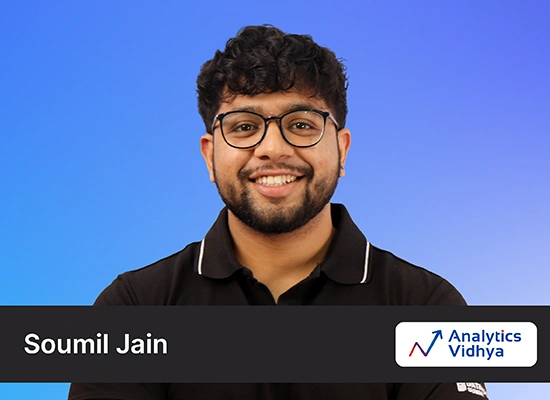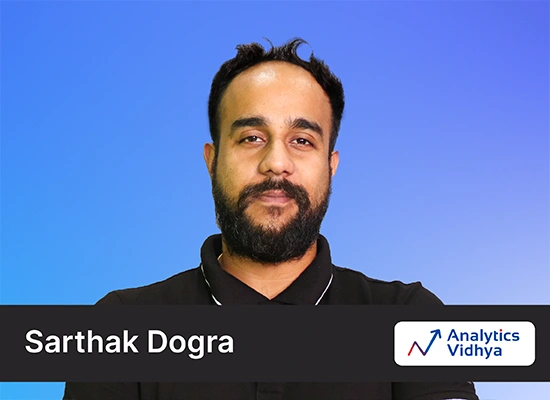ByteDance, the company behind TikTok, continues to make waves in the AI community, not just for its social media platform but also for its latest research in video generation. After impressing the tech world with their OmniHuman paper, they’ve now released another video generation paper called Goku. Goku AI ia a family of AI models that makes creating stunning, realistic videos and images as simple as typing a few words. Let’s dive deeper into what makes this model special.
Table of contents
- Limitations of Existing Models
- Goku: Flow Based Video Generative Foundation Models
- Model Training and Working of Goku
- Working Mechanism
- Videos Generated by Goku
- Performance Evaluation
- Image-to-Video (I2V) Generation: Animating Stills with Textual Guidance
- Qualitative Analysis: Goku vs. The Competition
- Ablation Studies: Understanding the Impact of Key Design Choices
- Conclusion
- Frequently Asked Questions
Limitations of Existing Models
Current image and video generation models, while impressive, still face several limitations that Goku aims to address:
- Data Dependency & Quality: Many models are heavily reliant on large, high-quality datasets, and their performance can suffer significantly when trained on data with biases, noise, or limited diversity.
- Computational Cost: Training state-of-the-art generative models requires substantial computational resources, making them inaccessible to many researchers and practitioners.
- Cross-Modal Consistency: Ensuring coherence between text prompts and generated visuals, especially in complex scenes and dynamic videos, remains a challenge. Existing models often struggle with maintaining consistency in style, background, and object relationships throughout a video sequence.
- Fine-Grained Detail & Realism: While overall visual quality has improved, generating fine-grained details and achieving photorealistic results, particularly in areas like textures, lighting, and human anatomy, still poses a hurdle.
- Temporal Coherence: Generating videos with smooth, realistic motion and consistent scene dynamics remains a difficult problem. Many models produce videos with temporal flickering, unnatural movements, or abrupt scene transitions.
- Limited Control & Editability: Existing models often provide limited control over the generated content, making it difficult to precisely edit or customize the output to specific requirements.
- Scalability Challenges: Scaling models to handle longer videos, higher resolutions, and more complex scenarios introduces significant architectural and training challenges.
- Joint Image-and-Video Generation: Creating models that excel at both image and video generation while maintaining consistency and coherence between the two modalities is still an open research area.
The Goku aims to overcome these limitations by focusing on data curation, rectified flow Transformers, and scalable training infrastructure, ultimately pushing the boundaries of what’s possible in joint image and video generation.
Goku: Flow Based Video Generative Foundation Models
Goku is a new family of joint image-and-video generation models based on rectified flow Transformers, designed to achieve industry-grade performance. It integrates advanced techniques for high-quality visual generation, including meticulous data curation, model design, and flow formulation. The core of Goku is the rectified flow (RF) Transformer model, specifically designed for joint image and video generation. It enables faster convergence in joint image and video generation compared to diffusion models.

Key contributions of Goku include:
- High-quality fine-grained image and video data curation
- The use of rectified flow for enhanced interaction among video and image tokens
- Superior qualitative and quantitative performance in both image and video generation tasks

Goku supports multiple generation tasks, such as text-to-video, image-to-video, and text-to-image generation. It achieves top scores on major benchmarks, including 0.76 on GenEval and 83.65 on DPG-Bench for text-to-image generation, and 84.85 on VBench for text-to-video tasks. Specifically, the Goku-T2V model achieved a score of 84.85 in VBench, securing the No.2 position as of 2024-10-07.
Model Training and Working of Goku
Goku is trained in multiple stages and operates using a sophisticated Rectified Flow technology to generate high-quality images and videos.

Training Stages:
- Text-Semantic Pairing: Goku is initially pretrained on text-to-image tasks. This stage is critical for establishing a solid understanding of text-to-image relationships and enabling the model to associate textual prompts with high-level visual semantics.
- Image-and-Video Joint Learning: Building on the text-to-semantic pairing, Goku extends to joint learning across both image and video data, leveraging a global attention mechanism adaptable to both images and videos. During this stage, a cascade resolution strategy is employed where training initially occurs on low-resolution data and is progressively increased to higher resolutions.
- Modality-Specific Finetuning: In the final stage, the team fine-tunes Goku for each specific modality to enhance its output quality further. They make image-centric adjustments for text-to-image generation and focus on improving temporal smoothness, motion continuity, and stability across frames for text-to-video generation.
Working Mechanism
Goku operates using Rectified Flow technology to enhance AI-generated visuals by making movements more natural and fluid. Unlike traditional models that correct frames step by step (leading to jerky animations), Goku processes entire sequences to ensure continuous, seamless movement.
- Image Analysis: The AI examines depth, lighting, and object placement.
- Motion Dynamics Application: The system applies motion dynamics to predict how different elements should move in a realistic setting.
- Frame Interpolation: Frame interpolation fills in the missing visuals, ensuring that animations appear natural rather than artificially generated.
- Audio Synchronization (if applicable): If an audio file is provided, the AI refines its motion synchronization, creating videos that match sound patterns accurately.
Additional Training Details:
- Flow-Based Formulation: Goku adopts a flow-based formulation rooted in the rectified flow (RF) algorithm, which progressively transforms a sample from a prior distribution to the target data distribution through linear interpolations.
- Infrastructure Optimization: MegaScale’s advanced parallelism strategies, fine-grained Activation Checkpointing, and fault tolerance mechanisms enable scalable and efficient training of Goku. ByteCheckpoint efficiently saves and loads training states.
- Data Curation: Rigorous data curation is applied to collect raw image and video data from various sources. The final training dataset consists of approximately 160M image-text pairs and 36M video-text pairs.
Videos Generated by Goku
Using advanced Rectified Flow technology, Goku transforms static images and text prompts into dynamic videos with smooth motion, offering content creators a powerful tool for automated video production
Turn Product Image To Video Clip
Product and Human Interaction
Advertising Scenario
Text to Video
Two women are sitting at a table in a room with wooden walls and a plant in the background. Both women look to the right and talk, with surprised expressions.
Performance Evaluation
Goku is evaluated on text-to-image and text-to-video benchmarks:
- Text-to-Image Generation: Goku-T2I demonstrates strong performance across multiple benchmarks, including T2I-CompBench, GenEval, and DPG-Bench, excelling in both visual quality and text-image alignment.
- Text-to-Video Benchmarks: Goku-T2V achieves state-of-the-art performance on the UCF-101 zero-shot generation task and attains a score of 84.85 on VBench, securing the top position on the leaderboard (as of 2025-01-25). As of 2024-10-07, Goku-T2V achieved a score of 84.85 in VBench, securing the No.2 position.
Qualitative results demonstrate the superior quality of the generated media samples, underscoring Goku’s effectiveness in multi-modal generation and its potential as a high-performing solution for both research and commercial applications.

Goku achieves top scores on major benchmarks:
- 0.76 on GenEval (text-to-image generation)
- 83.65 on DPG-Bench (text-to-image generation)
- 84.85 on VBench (text-to-video generation)
Alright, focusing solely on generating content for specific headings using the information you’ve provided.
Image-to-Video (I2V) Generation: Animating Stills with Textual Guidance
The Goku framework excels in transforming static images into dynamic video sequences through its Image-to-Video (I2V) capabilities. To achieve this, the Goku-I2V model undergoes fine-tuning from the Text-to-Video (T2V) initialization, utilizing a dataset of approximately 4.5 million text-image-video triplets sourced from diverse domains. This ensures robust generalization across a wide array of visual styles and semantic contexts.
Despite a relatively small number of fine-tuning steps (10,000), the model demonstrates remarkable efficiency in animating reference images. Crucially, the generated videos maintain strong alignment with the accompanying textual descriptions, effectively translating the semantic nuances into coherent visual narratives. The resulting videos exhibit high visual quality and impressive temporal coherence, showcasing Goku’s ability to breathe life into still images while adhering to textual cues.
Qualitative Analysis: Goku vs. The Competition
To provide an intuitive understanding of Goku’s performance, qualitative assessments were conducted, comparing its output with that of both open-source models (such as CogVideoX and Open-Sora-Plan) and closed-source commercial products (including DreamMachine, Pika, Vidu, and Kling). The results highlight Goku’s strengths in handling complex prompts and generating coherent video elements. While certain commercial models often struggle to accurately render details or maintain motion consistency, Goku-T2V (8B) consistently demonstrates superior performance. It excels at incorporating all details from the prompt, creating visual outputs with smooth motion and realistic dynamics.
Ablation Studies: Understanding the Impact of Key Design Choices
Two key ablation studies were performed to understand the impact of model scaling and joint training on Goku’s performance:
Model Scaling
By comparing Goku-T2V models with 2B and 8B parameters, it was found that increasing model size helps to mitigate the generation of distorted object structures. This observation aligns with findings from other large multi-modality models, indicating that increased capacity contributes to more accurate and realistic visual representations.

Joint Training
The impact of joint image-and-video training was assessed by fine-tuning Goku-T2V (8B) on 480p videos, both with and without joint image-and-video training, starting from the same pretrained Goku-T2I (8B) weights. The results demonstrated that Goku-T2V trained without joint training tended to generate lower-quality video frames. In contrast, the model with joint training more consistently produced photorealistic frames, highlighting the importance of this approach for achieving high visual fidelity in video generation.

Conclusion
Goku emerges as a powerful force in the landscape of generative AI, demonstrating the potential of rectified flow Transformers to bridge the gap between text and vivid visual realities. From its meticulously curated datasets to its scalable training infrastructure, every aspect of Goku is engineered for peak performance. While the journey of AI-driven content creation is far from over, Goku marks a significant leap forward, paving the way for more intuitive, accessible, and breathtakingly realistic visual experiences in the years to come. It’s not just about generating images and videos; it’s about unlocking new creative possibilities for everyone.
Key Takeaways
- Goku employs a comprehensive data processing pipeline for high-quality datasets.
- The model utilizes rectified flow formulation for joint image and video generation.
- A robust infrastructure supports large-scale training of Goku.
- Goku demonstrates competitive performance on text-to-image and text-to-video benchmarks.
Frequently Asked Questions
A. Goku is a family of joint image-and-video generation models leveraging rectified flow Transformers.
A. The key components are data curation, model architecture design, flow formulation, and training infrastructure optimization.
A. Goku excels in GenEval, DPG-Bench for text-to-image generation, and VBench for text-to-video tasks.
A. The training dataset comprises approximately 36M video-text pairs and 160M image-text pairs.
A. Rectified flow is a formulation used for joint image and video generation, implemented through the Goku model family.





